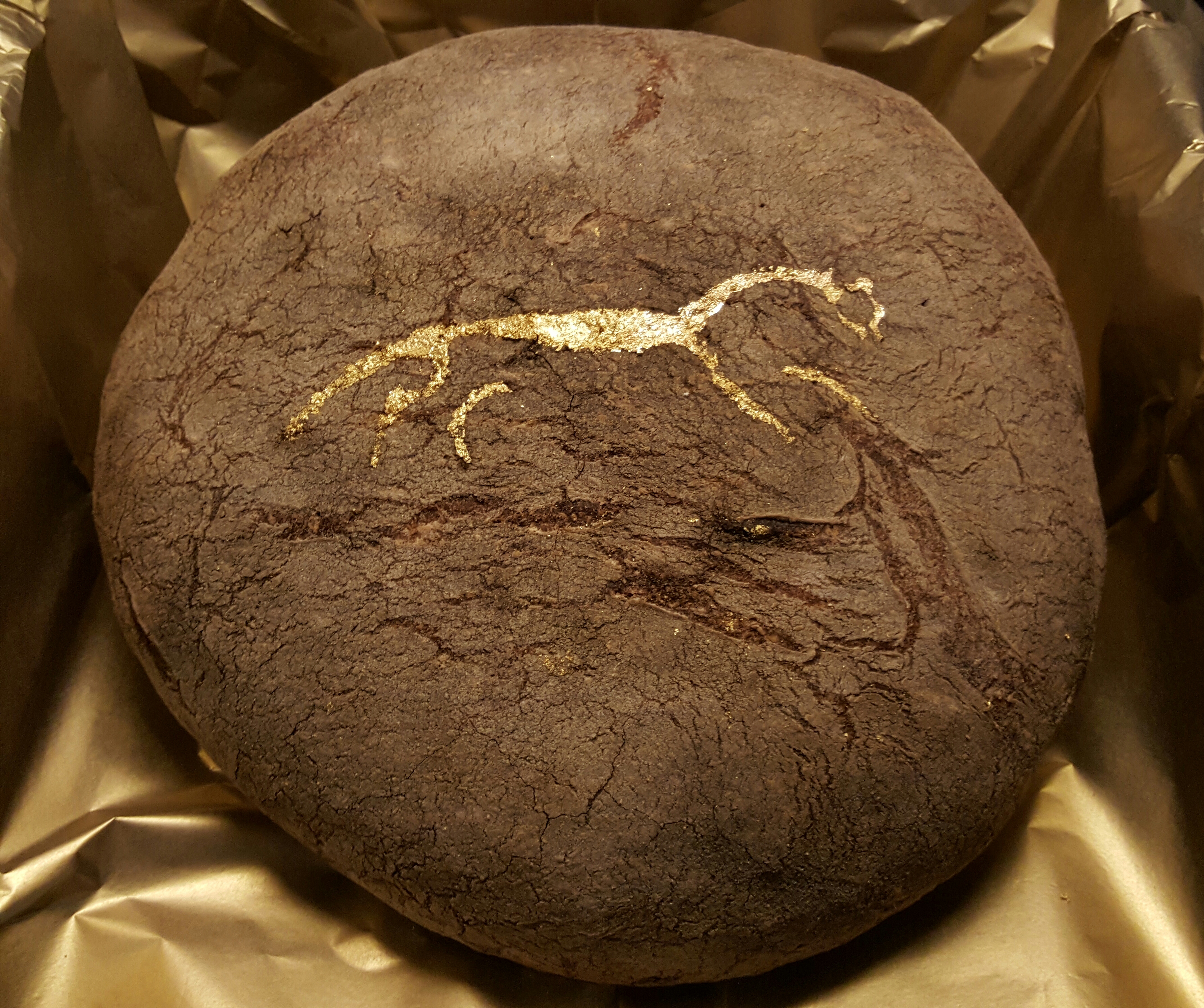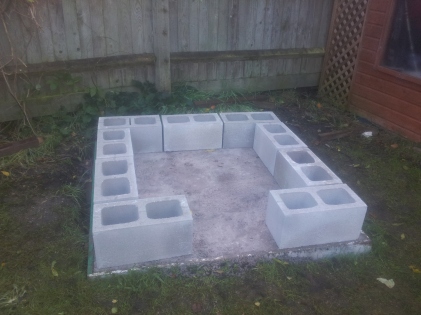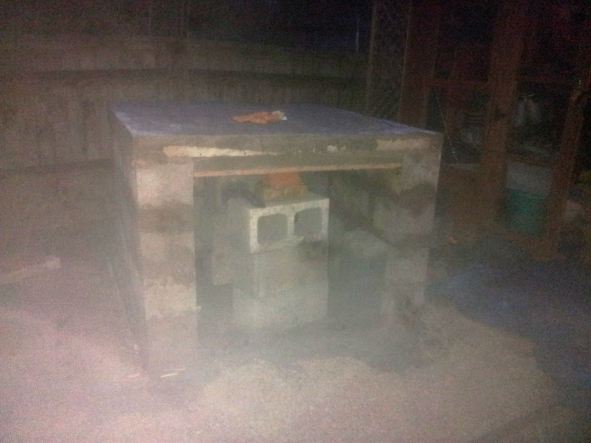By 2015 I had spent a decade leading and building a new company, l’d become a workaholic and my work/life needed balance and time to find a new direction. Baking helped provide the headspace to make that change.
My baking journey began in 2010 when my wife booked me onto a sourdough baking course at Natural Bread near Oxford and I took a trip round Wessex Mill, also in Oxfordshire. I came home with the flu but also with some beautiful loaves. I was smitten. I began baking sourdough regularly. Not pretty loaves, but strongly sour in flavour. You can’t buy bread like that. I was also inspired by the mill printing the name of the farm on each bag of flour. That’s provenance.
The sourdough and my love of Neapolitan pizza melded. I built a one-metre diameter Pompeii-style brick oven in my back garden to get the best baking results. Months later l’d over-stuffed the family with pizza and I turned to bread baking. Each year I learnt through courses and visits to PANARY in Dorset, Aston’s Bakehouse in Berkshire, The Bertinet Kitchen in Bath as well as Grain and Hearth in Whitstable. I met and was inspired by my baking heroes.
The quality and scale of my home baking grew until someone said my bread reminded her of Poilâne loaves. Then after a local summer fayre, someone rang to say “it reminds me of the bread I ate as a child in Sicily.” That was the lightbulb moment. lt was finally good enough to sell. Then, just after a Rofco oven course at Brook Food in Somerset with Adam Pagor then of Season bakery in Greenwich, I exchanged an ISA for a spiral mixer and a Rofco B40 oven.
By New Year’s Day 2017 I was selling bread baked on a Friday. From strongly aromatic sourdoughs made with organic stoneground flours to orange blossom brioche. By promising loaves to bread-lovers in my neighbourhood to be supplied first thing Saturday morning, I managed to prevent myself from working on Fridays for several years in a tasty form of workaholic therapy. The remainder of the time I worked as a consultant to the pharma and venture capital industry, helping identify some of the most innovative new ideas in medical biotechnology for my clients.

As an aside, I was also exploring off-grid baking and carbon neutrality. I was sourcing my flour from watermill and windmill-powered millers such as Jonathan Cook at Foster’s Mill (the Prior’s flour) near Cambridge and also Michael Stoate at Stoate’s Flour in Dorset. I had largely built my brick oven without power tools, compromising to pour the concrete plinth on Christmas eve by using a concrete mixer. In another strand of analysis, I had noticed the real wizards of bread baking talked about learning to read for the correct development of the dough with your hands as a key part of becoming a master baker. You can’t do this with an electric mixer, but you can do this if you mix and develop your dough in a madia (Italy), dough trough (UK) or Petrin (France). I had watched Nicolas Supiot‘s almost spiritual experience mixing dough in a petrin as part of his routijne as one of the early Paysanne Boulangers.
I co-designed a French-style wooden petrín (dough trough) with another local artisan, furniture maker Roland Haycraft in Wallingford (Oxfordshire, UK), in a new design which we updated for the 21st century. Our petrín design may be unique because it can be taken apart and stored in its trough, because in its final form it has carry handles, and because it is of a height better suited for a modern stature to avoid back injury. The trough and lid are anti-microbial maple hardwood and the lid and stand can be used together without the trough as a table, held together with marine brass sprung clips. The trough itself is held together with joinery making it hygeinic and strong, with no gaps into which levain could seep. The legs and shelf which form the stand are made of quality dense pine. This petrín can probably hold well in excess of 60kg of dough through batch fermentation. It is also an excellent container in which to let the bread prove.


I experimented with making real sourdough made without any electricity using just organic, stoneground flour from Foster’s Mill near Cambridge, tap water and unrefined sea salt. The dough was hand mixed and baked in my brick oven, fired only with wood from local, sustainable sources. I’ve included a picture of the “Windmill Sourdough” I made back in 2018 below, sold in the Hayfield Deli in Jericho at the time.

What I found was that entirely off-grid baking in South-East England isn’t a financially sustainable proposition because the total cost (and component costs) are very high compared to what most people are willing to pay for a loaf of bread. The subsequent inflationary years mean that even those artisans baking with fully automatic and electrically-heated ovens struggle to make their businesses work. For my purposes, I returned quickly to using my Rofco B40.
But my experience does prove we can make bread entirely without the electrical grid. And the flavour and the experience is very special. I believe that brick oven bread is better than all else, while hand mixing makes the cost of getting into micro-baking and homebaking very low, while we learn the key fundamental: we must be capable of interpretting the development of the dough by touch alone. A mixer will never do that as well as a human.
And baking is also a little like fishing. Anglers don’t sit by the river, or cast off from the beach, for many many hours on end in all weather solely for the purposes of catching fish. We bake because somehow the experience takes us closer to something, it allows us to relax, and because we become closer to our selves by baking bread.
Please consider following this blog and in return I will post some of the most popular recipes I developed on my baking Fridays from 2017-2020, including my take on Roman Army Bread.
[Based on an article I wrote which was first published in The Real Bread magazine in 2018]









 a fairly sturdy support. I think the most conveient way to do this is to create a 3-sided structure out of concrete blocks, and to either lay a piece of made to measure concrete on top, or pour a concrete table into formwork on top. By concrete block I mean aggregate concrete blocks. The blocks I used weigh around 50lbs each, so you need orange rubber
a fairly sturdy support. I think the most conveient way to do this is to create a 3-sided structure out of concrete blocks, and to either lay a piece of made to measure concrete on top, or pour a concrete table into formwork on top. By concrete block I mean aggregate concrete blocks. The blocks I used weigh around 50lbs each, so you need orange rubber  other – and pour concrete into the holes to form concrete cores. The latter method can be made stronger by inserting lengths of rebar prior to pouring in the concrete. Remember – concrete sets by a chemical reaction, not the same as drying – so it doesn’t matter some concrete will never see the light of day. In my project I used mortar, and learned to lay block by watching youtube videos, and used spirit levels. I wouldn’t recommened doing that, as if you are laying block for the first time, your mortar thicknesses will vary by more than the inter-block variation, so you will introduce error. Better slap some mortar down where you are building, and lay the blocks in place – then mix and pour a bunch of concrete into the cores – quicker, but more expensive for you and the environment. Before I started, I tried to get an idea of how it would look by laying the bricks out. Ab
other – and pour concrete into the holes to form concrete cores. The latter method can be made stronger by inserting lengths of rebar prior to pouring in the concrete. Remember – concrete sets by a chemical reaction, not the same as drying – so it doesn’t matter some concrete will never see the light of day. In my project I used mortar, and learned to lay block by watching youtube videos, and used spirit levels. I wouldn’t recommened doing that, as if you are laying block for the first time, your mortar thicknesses will vary by more than the inter-block variation, so you will introduce error. Better slap some mortar down where you are building, and lay the blocks in place – then mix and pour a bunch of concrete into the cores – quicker, but more expensive for you and the environment. Before I started, I tried to get an idea of how it would look by laying the bricks out. Ab out one if four blocks is going to be a “splitter” with readymade blocks with asplitting line built in. You can see one on the right in the picture at the top of this page. To split block you need a 3-4lb
out one if four blocks is going to be a “splitter” with readymade blocks with asplitting line built in. You can see one on the right in the picture at the top of this page. To split block you need a 3-4lb 
 y finished structure is pictured below, ignore the steel mesh I was just storing them there. But they are cut to size for the next part, which is to reinforce a concrete plinth which will be poured onto formwork above the concrete block support structure.
y finished structure is pictured below, ignore the steel mesh I was just storing them there. But they are cut to size for the next part, which is to reinforce a concrete plinth which will be poured onto formwork above the concrete block support structure.


